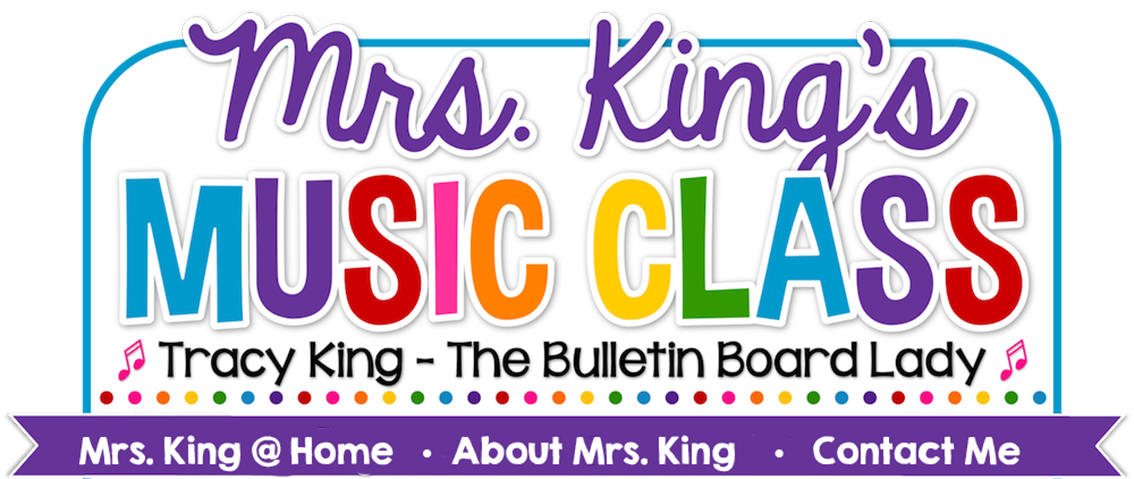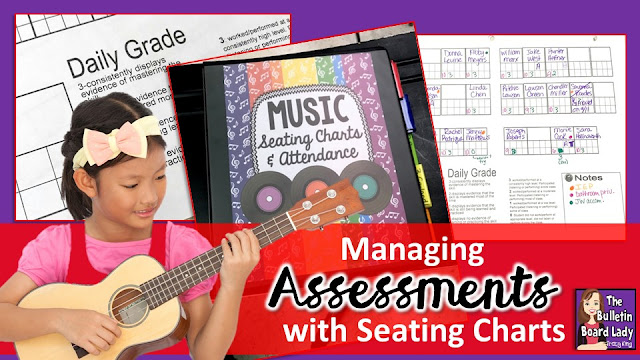Not every educator faces the challenge of authentic assessment for hundreds of students a week like specialists do. Some of my teaching friends see up to 200 or more students a day. WOWZA! In one school district I taught in, my administrator required 6 assessment grades per quarter. I'm sure this worked well for classroom teachers, but I only saw my classes 8-9 times a quarter. Who gives an assessment after 50 minutes of instruction? It was then that I devised a plan for daily grades.
Using a seating chart template that I had created for my classroom setups, I adding a means for recording a participation grade and a daily grade. I'm not a fan of participation grades. It feels like I'm saying "Just do as you are told and you'll 'get' an A." What I discovered is that occasionally I needed that participation grade to record to meet the requirements from my administrator. Not what my kiddos NEEDED to be assessed on, but what I was being required to submit.
As this idea evolved I decided that I could take my student learning objectives (SLOs) and use those as a means of daily assessment without too much of a hassle. The reality is that I was constantly using informal observation and formative assessments in the form of exit tickets and that I could make this work in my classroom.
My seating charts function as my attendance book and partial grade book. I add the date to the large box on the left and if a student is absent, I mark A in the corresponding box with the student name. When setting this up, I include a color coded system to remind me about students that I may need to make special accommodations for including alternate activities or extra time for assignments. In my district we have very few students that opt out of activities based on their religion so if I have a student that can't participate in holiday or patriotic activities, I'll mark that to remind myself to alter the activity or provide another one for those students.
I've tried to simplify this system every year. Currently unless a student has a less than perfect score I do not record it on the seating chart. If a student was in class and consistently displayed evidence of mastering whatever skill were working on then their box for that day is empty. When I transfer grades to the computer it's less clutter to look at.
Look at the example below. Phillip Washington has been in class all four days and earned all of the points each day. He has four empty boxes. Hillary Zenith below him has a similar report except on September 11, she earned 2 points instead of 3 on mastering the skill that day.
In addition to daily grades I also record grades that I take during class time on the seating chart.
Note: This examples were created to look like sheets that I have used in my classroom, but I have made up the names to protect my kiddos' privacy.
I use rubrics for almost every performance event that I grade. I post the scoring guide or print each student a copy so that they know how they will be graded. The rubrics (above and below) are just a few of scoring guides that are available in my Ready To Use Music Rubrics. It's 118 pages of scoring guides and data tracking tools that I've been using for years. Click HERE to download the set.
Ready to try tracking assessments with your seating chart? Download this FREE set of seating charts. Several varieties are included and because this is a PowerPoint file you can manipulate the pieces so that it is perfect for your classroom.
Like these ideas? PIN them for later.



